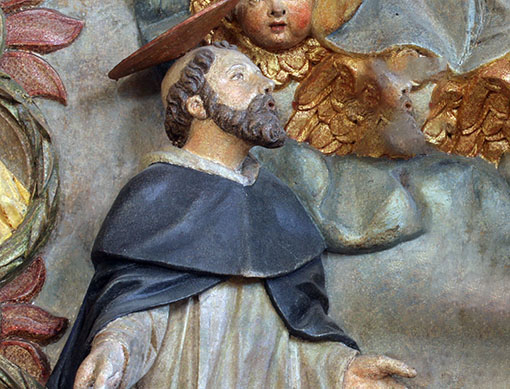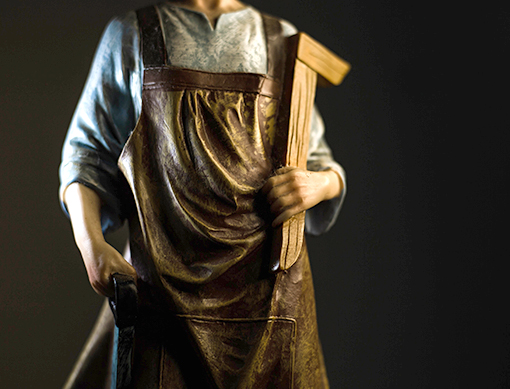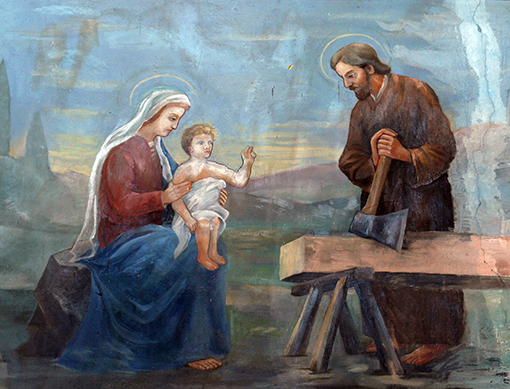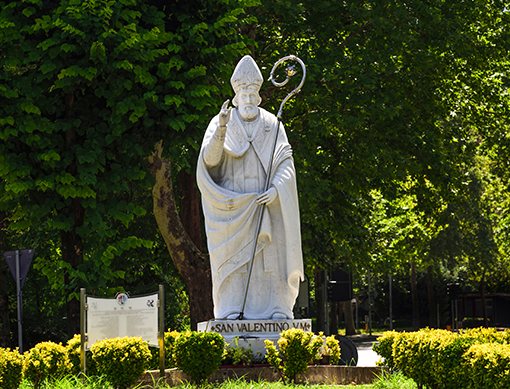Recently, I was reading an article about heroism, and found it interesting that, originally, heroes were not necessarily good, but they were always extraordinary. To be a hero, the author wrote, was to expand the sense of what was possible for a human being.
 I thought about our youth, and the people they often choose to emulate … not always heroes by any means, but celebrities, athletes, actors, social media influencers and I wonder about what possibilities they are striving to meet.
I thought about our youth, and the people they often choose to emulate … not always heroes by any means, but celebrities, athletes, actors, social media influencers and I wonder about what possibilities they are striving to meet.
The author pointed out, “because the ideals to which we aspire do so much to determine the ways in which we behave, we all have a vested interest in each person having heroes, and in the choice of heroes each of us makes.”
We certainly cannot remove all the media influences that impact our children’s choices, but as educators we can introduce them to some young saints, who not only shared the religious ideals we try to instill in our youth but are models of what is possible for young people who often have to deal with feeling like they are not enough.
Getting to know St. Dominic Savio
Dominic was a young boy when he realized he was different from his peers. His love of God and his desire for prayer drew laughter and teasing from his classmates, so he tried hard to keep his differences to himself.
Dominic was born into an Italian peasant family. When he was 12, he joined St. John Bosco (known as Don Bosco) as a student in the Oratory in Turin. He had a great desire to be a priest and to help Don Bosco who was known for helping neglected boys.
His frail health would lead him to say, “I can’t do big things. But I want all I do, even the smallest thing, to be for the greater glory of God.”
But Dominic was a peacemaker, a helper and a caring friend, often settling disputes between his peers at the risk of being injured himself.
Dominic’s frail health eventually resulted in him becoming very ill. He died when he was 14 years old, after receiving the Sacrament of Anointing of the Sick.
In RCL Benziger’s Saint Resource, which includes a youth friendly version of St. Dominic’s life, we read, “Father John Bosco, who was later canonized a saint, wrote the story of Dominic’s life. Dominic was named a saint in 1954, almost 100 years after he died. He was the youngest non-martyr to be declared a saint in the Church. Some people thought that he had not lived long enough to be considered for sainthood. But Dominic’s example teaches us that no matter how old we are, we can serve the Lord in small ways every day.”
• Share the life of St. Dominic with your students. Help them identify his virtues.
• Provide them with an opportunity to identify and discuss the similarities and differences between his hard times and theirs.
• Encourage them to think of smalls ways in which they can serve God every day.
For teachers – At the conclusion of a Synod for Youth, Pope Francis wrote an exhortation, Christus Vivit: Christ is Alive, in which he lists 12 young saints who may be an inspiration for youth. He writes, “The heart of the Church is also full of young saints who devoted their lives to Christ, many of them even to dying a martyr’s death. They were precious reflections of the young Christ; their radiant witness encourages us and awakens us from our lethargy.”
 About the Author
About the AuthorMary Clifford Morrell, mother of six and grandmother to ten, is a Catholic journalist, editor, and author who has served the Dioceses of Metuchen and Trenton, New Jersey; Burlington, Vermont, and RENEW International in the areas of religious education and communication.
There’s a lot to be said about imagining. It’s a regular pastime of children, and a wonderful tool for teaching. It’s also at the heart of all creative endeavors. Can you imagine a world where there is no imagination?
 Since March is also the month dedicated to St. Joseph, it presents a wonderful opportunity to do some imagining about the earthly father of Jesus, so important in the life of the Son of God, but from whom there is not a word inscribed in Scripture.
Since March is also the month dedicated to St. Joseph, it presents a wonderful opportunity to do some imagining about the earthly father of Jesus, so important in the life of the Son of God, but from whom there is not a word inscribed in Scripture.
St. Joseph is mentioned in the Nativity stories in the Gospels of Matthew and Luke, once in the Gospel of John when someone refers to Jesus as the “son of Joseph,” and no where else in Scripture, even in the Gospel Mark.
What we do know about St. Joseph from Scripture is very limited, and what we’ve heard about St. Joseph, like his age or when or how he died, comes from oral and written tradition, often from ancient documents that were not part of the books of Scripture.
So, what do we actually know from Scripture?
Joseph was a carpenter, or, in the original Greek of the Scriptures, a “tekton,” a person skilled in using materials of all kinds. Jesus was known as the carpenter’s son. Neighbors were probably familiar with father and son working together, not only in their shop, but making repairs or doing first century remodeling on local homes or businesses.
Joseph was the spouse of Mary and foster father of Jesus. His family depended on him. He passed on values, traditions, and his Jewish faith. They went on pilgrimage together to the Temple in Jerusalem where they lost Jesus for a few days. As any good father would, he went back to look for him with Mary. No doubt there were other times when Joseph had to intervene in some adventure of Jesus, as a child or as a teenager.
Joseph listened and was obedient to God. Joseph is sometimes referred to as the man of dreams because it was through angels speaking to him in dreams that God communicated his plans to Joseph. Three of those times included when an angel of the Lord tells him to take Mary as his wife and name the child Jesus; to flee by night into Egypt with Mary and Jesus, to return to Israel with his family, and to move to Galilee where he establishes his home in Nazareth.
A Day in the Life of St. Joseph: An exercise in imagining
Using both your curriculum guides and Bibles, help your students come to know Joseph a little bit better, at least as more than a statue with a staff standing in the Nativity scene. Then encourage them to write or draw a day in the life of St. Joseph as they imagine it might have been. They might need help with a little imagery of the environment the Holy Family lived in. Some of it might be in student texts, but some library research would held engage the students in creating their literary or artistic masterpiece.
For teachers: Check out Pope Francis’ 2021 Catechesis 1 on St. Joseph – St. Joseph and the environment in which he lived. It includes what he calls a “home-made prayer” to St. Joseph, that comes from the heart:
Saint Joseph,
you who have always trusted God,
and have made your choices
guided by his providence
teach us not to count so much on our own plans
but on his plan of love.
You who come from the peripheries
help us to convert our gaze
and to prefer what the world discards and marginalises.
Comfort those who feel alone
and support those who work silently
to defend life and human dignity.
Amen.
 About the Author
About the AuthorMary Clifford Morrell, mother of six and grandmother to ten, is a Catholic journalist, editor, and author who has served the Dioceses of Metuchen and Trenton, New Jersey; Burlington, Vermont, and RENEW International in the areas of religious education and communication.
We have many mysteries in our faith. These are beliefs that we accept as truth on faith alone because they have been revealed to us by God. These mysteries are central to our faith, but not always the easiest to explain to our children and students. The word mystery stems from a Greek word, which, when translated into Latin become the word, sacrament.
 The primary mystery of our faith is the Trinity. While intellectually difficult to understand, the mystery of the Holy Trinity is understood in one’s heart as the revelation of God’s love for all men and women. Pope Francis has said that the Christian belief that the persons of the Holy Trinity “are not three gods” but rather “one God in three persons” speaks to the heart because “we find it encompassed in that expression of St. John which summarizes all of revelation: ‘God is love.'”
The primary mystery of our faith is the Trinity. While intellectually difficult to understand, the mystery of the Holy Trinity is understood in one’s heart as the revelation of God’s love for all men and women. Pope Francis has said that the Christian belief that the persons of the Holy Trinity “are not three gods” but rather “one God in three persons” speaks to the heart because “we find it encompassed in that expression of St. John which summarizes all of revelation: ‘God is love.'”
Another key mystery, the Paschal Mystery, refers to God’s plan of salvation which was ultimately fulfilled through Christ’s Passion (his suffering and crucifixion), death, Resurrection, and Ascension. The word paschal refers to the saving blood of the Passover lamb in the Exodus. We learn from Jesus, our Paschal Lamb, that new life can come from death, that we can find meaning in tough times, and that there really is light in the darkness.
We see God’s mysterious acts of restoration all around us and in our own lives. For example, many plants die in the fall, yet when spring comes, they return from seed or from unseen roots. Our Easter decorations of flowers, bunnies, and chicks are appropriate symbols of new life that comes in springtime.
The Eucharist is a mystery that makes Christ’s Paschal sacrifice present to us, so that we truly and actively participate in its saving power. After the consecration of the bread and wine at Mass into the Body and Blood of Christ, the priest proclaims, “The mystery of faith!” Even though we cannot fully comprehend this event, we are invited to notice this happening -- we ring bells! -- to think about it, and to give thanks for it.
Gather signs of new life and rebirth. Arrange twigs of budding pussywillow or forsythia in a vase. Notice how the warmth of the classroom coaxes them to bloom. Collect some tadpoles from a pond and observe their development. Plant some seeds in ice cream cups and plant the shoots outside.
Reflect on losses in our lives. Ask children to name losses that people experience that make them sad. Examples will be: Someone they love died; their friend moved away; their own family moved to a new neighborhood; they changed schools; their pet died; their parents broke up; their sister moved out.
Next, ask students how to comfort someone about the loss. Be prepared to offer ideas: Sharing good memories; meeting new friends; finding a sympathetic person who listens to them.
Family Life Connections. In the Family Life series, God’s Gift of Love is explored at every grade level, K-8. A prominent theme in these units is caring for others. Incorporate these lessons into your regular faith formation sessions.
 About the Author
About the AuthorDr. Lauri Przybysz specializes in equipping families to live their vocation to be domestic churches and signs of God’s love. Lauri received the Doctor of Ministry from the Catholic University of America, and she has been both a Catholic middle school religion teacher and a faith formation coordinator at the archdiocesan and parish levels. She is the mother of six children and grandmother of 21.
Lent comes around every year, and it is a good thing! We are all called to continually be renewing our faith and growing in our relationship with Jesus Christ and with one another. We are called to be better Christians today than we were yesterday, and better tomorrow than we are today. This call to ongoing conversion can be described in the word, Metanoia. Metanoia is a Greek word the Gospels use for that two-fold process of turning from sin and toward God.
 Along with us adults, children first need to hear again and again the proclamation of the Good News, “the mighty works of God” (Evangelization in the Modern World, Pope Paul VI, 15). If our faith is alive, it will be aroused again and again as we mature as disciples.
Along with us adults, children first need to hear again and again the proclamation of the Good News, “the mighty works of God” (Evangelization in the Modern World, Pope Paul VI, 15). If our faith is alive, it will be aroused again and again as we mature as disciples.
What experiences can arouse the faith of children? Our faith formation classes in school and in the parish are a vital source of those faith experiences. We aim to make the most of the time we spend with our students and their families. Having programs and resources like Be My Disciples and Blest Are We Faith in Action, gives us the tools to be systematic about providing the content for formation that is ongoing. Download a worksheet on Repenting for Lent that works for multiple age groups.
Having Mercy on Ourselves. Growth and change can be hard. Along with teaching children about repentance and renewal, we need to teach them to be patient with themselves when they sometimes fail to be kind and loving. God is gentle with people, and we need to be gentle with ourselves. Teach children that God loves their efforts to do better each day.
Nurture Hope for Human Nature. We can change, and so can other people. Research has found that children who have a belief that people have the potential to change are more likely to show resilience when things get tough. Compared to kids who believe that bullies will always be bullies and victims will always be victims, kids who believe that people can change report less stress and anxiety, better feelings about themselves in response to social exclusion, and better physical health.
Testimonies to Growth. Stories from the Bible, like the parable of the Prodigal Son (Luke 15:11-32), teach children that God is always eager and waiting to receive back one who wants to change. Not every saint started out saintly, either. Some people whom we revere today changed their lives to follow Jesus: St. Ignatius of Loyola, St. Augustine of Hippo, Servant of God Dorothy Day.
Dramatize Metanoia. In the story of the Prodigal Son in Luke 15:11-32) the son rashly wastes his inheritance, but the loving father, like God, welcomes him back when he repents and changes his life (metanoia). Read the parable as a class. A short video of the story is available with the Blest Are We Faith in Action, Grade 4, Unit 4 in Flourish (you will need to be logged into your account to see this). Ask for volunteers to portray each of the characters in their own words. Ask the rest of the class for their reactions and lessons they take away from seeing the story in action.
 About the Author
About the AuthorDr. Lauri Przybysz specializes in equipping families to live their vocation to be domestic churches and signs of God’s love. Lauri received the Doctor of Ministry from the Catholic University of America, and she has been both a Catholic middle school religion teacher and a faith formation coordinator at the archdiocesan and parish levels. She is the mother of six children and grandmother of 21.
Sunday afternoon at grandma’s house helping a three-year-old get dressed for 30-degree snowy weather:
“You need to put your jacket on.”
“Why?”
“It’s very cold outside.”
“Why?”
“Well, it’s winter.”
“Why?”
 The “whys” are rapid fire, as if he’s expecting the volley of questions and answers. But explaining seasons and weather to a young child takes some thought. I hesitate, realizing that no matter what I say it will be followed with his adorable and frustrating query.
The “whys” are rapid fire, as if he’s expecting the volley of questions and answers. But explaining seasons and weather to a young child takes some thought. I hesitate, realizing that no matter what I say it will be followed with his adorable and frustrating query.
In a weak moment, I reply, “Look, if you don’t put your jacket on you will look just like that little snowman on the front lawn.” Now he hesitated and finally stuck an arm in one sleeve. As he slid the second arm in, he turned around with scrunched eyebrows and said, “How?”
I can never win.
Anyone who works with children knows their penchant for questions, and one of their favorites is “Why?”
It begins early and by the age of three, it’s often the most expressed question in response to just about anything you say to them. It’s also a crucial component of brain development and expansion of knowledge that helps them make sense of their world.
They also develop a sense of who they should go to for questions to be answered, who answers them best, and willingly. But educators and child psychologists recognize that once children are introduced to a school setting, their questioning often diminishes, sometimes because they are discovering the answers themselves but also because their questions are discouraged.
Answering “why” questions about religion can be challenging, because religion can be complex and the answers, especially for younger students, are sometimes difficult to understand. Finding ways to make our Catholic faith easier to understand goes a long way in helping students live their faith.
Lent is a wonderful opportunity to encourage questions, and with older students, support their efforts to discover and express their own answers, about any number of Lenten practices:
• Why do Catholics celebrate Lent?
• Why is there a season of Lent (rather than just a feast day)?
• Why do we begin Lent with ashes?
• Why is the season of Lent 40 days?
• Why are prayer, fasting and almsgiving the pillars of Lent?
• Why do we need to prepare for Easter?
If your students haven’t already asked you, ask them some “why” questions about Lent. Or have them write their own questions down. Invite the parish priest, religious sister or brother, or deacon to visit and answer some, or all of the questions.
Some thoughts from Pope Francis’ Easter message are also inspirational, especially for teachers. He speaks of the experience of the Apostles who are present for the Transfiguration of Jesus on Mount Tabor, and reminds us, “During any strenuous mountain trek, we must keep our eyes firmly fixed on the path; yet the panorama that opens up at the end amazes us and rewards us by its grandeur.”
This is an image children can understand, and would do a great job or creating into Lenten art.
The Holy Father also underscored the words of God to the disciples, His voice coming through the clouds: “Listen to him.”
Pope Francis stressed “… we need to listen to Jesus. Lent is a time of grace to the extent that we listen to him as he speaks to us.” This is a lesson that even the youngest student can understand if they have been taught the lessons of Jesus.
In addition to the liturgical year section in RCL Benziger religion textbooks, which include such lessons as Ash Wednesday, Lent, Palm Sunday, and Holy Week, a free series of downloadable Lenten and Triduum resources are also offered here. The United States Conference of Catholic Bishops also offers online resources to help answer some of the “why” questions of Lent.
What is Lent? | USCCB
Why is Lent 40 Days? | USCCB
Why Ashes? | USCCB
 About the Author
About the AuthorMary Clifford Morrell, mother of six and grandmother to ten, is a Catholic journalist, editor, and author who has served the Dioceses of Metuchen and Trenton, New Jersey; Burlington, Vermont, and RENEW International in the areas of religious education and communication.
As we travel through our neighborhoods, it’s likely we will be reminded of the holiday or season of the month, according to which flags are flying on the homes we pass, or in many cases, the lights and decorations which adorn their properties – St. Patrick’s Day, Fourth of July, Halloween, Valentine’s Day, Thanksgiving, and, of course, Christmas.
 What may not be well known, even for Catholics, is that each month of the year is also a time for the faithful to celebrate and honor something special in the Church. Every month has an intention.
What may not be well known, even for Catholics, is that each month of the year is also a time for the faithful to celebrate and honor something special in the Church. Every month has an intention.
For the month of February, Catholics honor the Holy Family, a frequent teaching of Pope Francis: “Today our gaze on the Holy Family lets us also be drawn into the simplicity of the life they led in Nazareth. It is an example that does our families great good, helping them increasingly to become communities of love and reconciliation, in which tenderness, mutual help, and mutual forgiveness is experienced.
“Let us remember the three key words for living in peace and joy in the family: “may I,” “thank you” and “sorry” … I would also like to encourage families to become aware of the importance they have in the Church and in society. The proclamation of the Gospel, in fact, first passes through the family to reach the various spheres of daily life.”
Children are familiar with experiences of love and forgiveness, caring and helpfulness within their own families. They are also familiar with anxiety, anger, disappointment and fear. What they know about the Holy Family may not be enough for them to think of Mary, Joseph and Jesus in terms of a real family, like theirs, who experience the ups and downs of family life.
The fact that the month of the Holy Family comes so soon after Christmas means teachers can make use of the image of the Nativity which is fresh in the mind of students. If they haven’t seen one at home, they have likely seen one in the classroom. This may be the only scene they’ve ever envisioned of the Holy Family, but that holy night was just the beginning of their family life together.
Let students imagine the day-to-day life of the Holy Family, from Jesus’ birth in Bethlehem until his death and Resurrection. Encourage students to imagine the life of the Holy Family as they live their own lives as a family, and to tell, write, or draw their ideas of how the Holy Family might have set up a home in Nazareth, the kind of chores Jesus had to do, how he helped Joseph in the family carpentry business, how he studied and learned his faith. What was Jesus like, as a young person like them? Did Jesus get in trouble if he threw his prayer shawl on floor instead of hanging it up or was late to dinner?
Include visual displays, especially in the prayer corner. An image, including prayer cards, or a statue of the Holy Family, serves as a daily reminder for students that the month is dedicated to the Holy Family. If there is a box or jar for prayer intentions, direct students to address their intentions during the month to the Holy Family. Encourage them to write prayer intentions for family members.
Read Scripture, especially Luke 2:41-52, the story about Jesus remaining behind in Jerusalem after the family travels there to go to the temple. It’s a great opportunity to discuss how every family, even the Holy Family, experience difficult situations, and to discuss how the Holy Family handled this one.
Pray. As observant Jews, Mary, Joseph and Jesus would have followed Jewish law and offered formal prayers in their home several times a day, in addition to praying always in their hearts. One of the daily prayers, said morning and evening, would have been the Shema in the Book of Deuteronomy. Chapter 6, verses 4-9 (printed below) are good for students to read, too, to gain a better understanding of what was important to the Holy Family. The first line is a profession of faith: “Hear O’ Israel, the Lord is our God, the Lord is One.”
In addition, you might add a prayer specifically for the family and pray it as a class at least once a week during the month, perhaps on Friday before the students go home for the weekend, or more often if time allows. The prayer below, from the Missionaries of the Holy Family, may be used.
For teachers – For those interested in including Catholic themes of the month into their religion classes, or their classrooms, here’s the list for the rest of the year: March, St. Joseph; April, Holy Eucharist and Holy Spirit; May, Virgin Mary; June, Sacred Heart of Jesus; July, Precious Blood of Jesus; August, Immaculate Heart of Mary; September, Seven Sorrows of Mary and the Holy Cross; October, Rosary; November, Poor Souls in Purgatory; December, Advent or the Coming of Christ.
The Holy Family Prayer
Jesus, Son of God and Son of Mary, bless our family. Graciously inspire in us the unity, peace, and mutual love that you found in your own family in the little town of Nazareth. Mary, Mother of Jesus and Our Mother, nourish our family with your faith and your love. Keep us close to your Son, Jesus, in all our sorrows and joys. Joseph, Foster-father to Jesus, guardian and spouse of Mary, keep our family safe from harm. Help us in all times of discouragement or anxiety. Holy Family of Nazareth, make our family one with you. Help us to be instruments of peace. Grant that love, strengthened by grace, may prove mightier than all the weaknesses and trials through which our families sometimes pass. May we always have God at the center of our hearts and homes until we are all one family, happy and at peace in our true home with you. Amen. From the Missionaries of the Holy Family
The Shema
Hear, O Israel: The Lord is our God; the Lord is one. And you shall love the Lord, your God, with all your heart and with all your soul, and with all your means. And these words, which I command you this day, shall be upon your heart. And you shall teach them to your sons and speak of them when you sit in your house, and when you walk on the way, and when you lie down and when you rise up. And you shall bind them for a sign upon your hand, and they shall be for ornaments between your eyes. And you shall inscribe them upon the doorposts of your house and upon your gates (Deut. 6:4-9).
 About the Author
About the AuthorMary Clifford Morrell, mother of six and grandmother to ten, is a Catholic journalist, editor, and author who has served the Dioceses of Metuchen and Trenton, New Jersey; Burlington, Vermont, and RENEW International in the areas of religious education and communication.
Ash Wednesday begins a wonderful season of reflection and preparation. Receiving the ashes as a member of the church community helps children recognize that they are an important part of the Catholic community and are united with the Church in its Lenten preparation. It is believed that Ash Wednesday was first observed in the Middle Ages around the 8th century. It was first called the Day of Ashes. Since then, the practice has also become an annual ritual in many other Christian churches, including Lutherans and Methodists.
 Ash Wednesday provides an incredible teaching moment for kids. This is an opportunity to intentionally pass on the truth that life is but a breath and that our eternal relationship with God is our primary goal. The sage teaches us, "It is better to go to a funeral than to go to a party, because death is the destiny of everyone. The living should take this to heart" (Ecclesiastes 7:2).
Ash Wednesday provides an incredible teaching moment for kids. This is an opportunity to intentionally pass on the truth that life is but a breath and that our eternal relationship with God is our primary goal. The sage teaches us, "It is better to go to a funeral than to go to a party, because death is the destiny of everyone. The living should take this to heart" (Ecclesiastes 7:2).
On Ash Wednesday, we receive a sign of the cross on our foreheads from ashes (usually made from the palms used on Palm Sunday the previous year). This mark is a reminder of our mortality--we are all going to die--and a call for repentance. The person who gives the signs says over you, "Remember you are dust, and to dust you will return" (Genesis 3:19b) or “Turn away from sin and be faithful to the gospel” (adapted from Mark 1:15).
Lent is a time of prayer, penance and sacrifice, a time for the entire family to be more attentive to the words of Jesus and to each other. It is a time to try harder to put Christ’s teachings into practice. The Church asks everyone 14 years of age or older is bound to abstain from meat on Ash Wednesday, all the Fridays of Lent and Good Friday. Everyone 18 or older, and under 59 years of age, is bound to fast on Ash Wednesday and Good Friday.
While children are not bound to observe these penitential practices, they will benefit from participating.
On a Positive Note. Lent means doing something as well as giving up something. They could choose a positive action for each day of Lent.
A New Take on Fasting. Ask students to brainstorm creative ways they could fast during Lent. Ask your class to add to these ideas:
- Fast from fast food.
- Fast from TV one day a week.
- Fast electronic games one day a week.
- Fast from using the computer and spend that time with your family.
- Fast from buying anything that is unnecessary during Lent.
- Fast from bad habits that need to be changed or given up.
Making the Most of Lent in the Classroom. To help your students go deeper into the Lent, your Blest Are We Faith in Action series provides “Feasts and Seasons” lessons near the end of the student book at all levels. The teaching resources provided include the Teacher or Catechist Background page, Resources, and At-A-Glance Planner. The lessons follow the same Share, Hear and Believe, and Respond process as the unit chapters. Also, look for free downloadable resources from RCL Benziger for Lent.
 About the Author
About the AuthorDr. Lauri Przybysz specializes in equipping families to live their vocation to be domestic churches and signs of God’s love. Lauri received the Doctor of Ministry from the Catholic University of America, and she has been both a Catholic middle school religion teacher and a faith formation coordinator at the archdiocesan and parish levels. She is the mother of six children and grandmother of 21.
On a recent trip to the supermarket, shoppers entered the store and were immediately struck by an 8 foot high wall of red – bouquets of red roses setup in tiers, other flowers wrapped in red paper, hearts of all sizes and shapes, some as balloons, some filled with candy, others with chocolate covered strawberries.
 The display was wide enough to obscure the entire produce department. It was garish, it was overkill, it was the perfect demonstration of how a holiday with a lovely tradition and meaningful message has become commercialized.
The display was wide enough to obscure the entire produce department. It was garish, it was overkill, it was the perfect demonstration of how a holiday with a lovely tradition and meaningful message has become commercialized.
One shopper passing by the display shook her head and turned to me to say, “Just in case you forgot Tuesday is Valentine’s Day.” We both chuckled and walked away.
Valentine’s Day is a holiday with a storied history. Sometime along the way the “saint” was dropped from a day named after a venerated Catholic – St. Valentine.
Tradition holds that St. Valentine was Bishop (and patron saint) of Terni, Italy, ordained in 197. He was known as a man of great love and devotion to those in need, and because of his greater love for Christ, was blessed with working miracles and healing the sick. His love of Christ and his faith was so great that he refused to deny both to the Emperor of Rome and was sentenced to death.
He was martyred on Feb. 14.
While the Valentine’s Day we know and celebrate is focused mostly on romantic love, the love of St. Valentine is a more profound, life-changing love that comes from a relationship with God. In these challenging times, with bullying a sad reality for many children, and a culture that seems to be moving away from sacrificial love of others to selfishness and entitlement, the reinforcement for children that they are loved by God is essential. It’s is also essential that they learn to share that love, which has a foundation in a respect for life in general, in their everyday lives.
Without detracting from the lovely Valentine’s Day traditions established in our homes and classrooms, this special holiday is a wonderful opportunity to help bring a deeper meaning of love to the celebration.
Consider adding:
Sacred Heart of Jesus and Immaculate Heart of Mary – Among the many hearts displayed or used for Valentine’s Cards, include a visible reminder of the hearts of Jesus and Mary, from whom perfect love flowed. Such images, though Valentine’s Day is once a year, reminds students that love is needed and should be shared every day. See the reflection on the Sacred Heart of Jesus at the end of this post, and the short morning offering prayer to the Immaculate Heart of Mary that may be added to morning prayers in the classroom.
Use Scripture quotes as Valentines or conversation starters – Some examples: “So faith, hope, and love abide, these three; but the greatest of these is love” (1 Corinthians 13:13); “And above all these put on love, which binds everything together in perfect harmony” (Colossians 3:14); “Let love be genuine. Abhor what is evil; hold fast to what is good” (Romans 12:9).
Have a conversation about love – Use 1 Corinthians 13:4-8, a Scripture quote often read in marriage ceremonies. There are 16 qualities of love mentioned here, each of which is an opportunity for students, guided by teachers, to share their understanding of what each quality means. “Love is patient, love is kind. It does not envy, it does not boast, it is not proud. It does not dishonor others, it is not self-seeking, it is not easily angered, it keeps no record of wrongs. Love does not delight in evil but rejoices with the truth. It always protects, always trusts, always hopes, always perseveres. Love never fails.”
O Jesus, through the Immaculate Heart of Mary,
I offer you my prayers, works, joys, and sufferings of this day for all the intentions of your Sacred Heart in union with the Holy Sacrifice of the Mass throughout the world, for the salvation of souls, the reparation of sins, the reunion of all Christians, and in particular for the intentions of the Holy Father this month.
Amen.
For teachers: A reflection - God's Servant First: The Sacred Heart of Jesus - A Reign of Love | USCCB
 About the Author
About the AuthorMary Clifford Morrell, mother of six and grandmother to ten, is a Catholic journalist, editor, and author who has served the Dioceses of Metuchen and Trenton, New Jersey; Burlington, Vermont, and RENEW International in the areas of religious education and communication.
Though shrouded in the mists of time, St. Valentine’s legend tells of a 3rd Century bishop in Italy, who died a martyr’s death. The Roman leaders imprisoned him for secretly conducting marriages for soldiers, who were not allowed to have wives. He is said to have sent a letter – “from your Valentine” -- to his jailer’s daughter after he healed her of blindness. How appropriate that on his feast day we recall his courageous ministry to lovers and notes of loving care to friends.
 Tender Hearts. If you are planning a classroom card exchange, help everyone have a good time by requesting that children include everyone in the class on their list.
Tender Hearts. If you are planning a classroom card exchange, help everyone have a good time by requesting that children include everyone in the class on their list.
Decorate the doors or windows – Brainstorm with students about what they love about their friends, their school, their family, their parish. Have students cut out hearts and write some of these “loving thoughts” and display them in your classroom during February.
Chains of Love. Print Bible verses about love and friendship on red, white, and pink paper. Cut the verses into strips, fold each strip in half, bend into a heart shape, and join the strips into links of a chain. Each day after Valentine’s Day, tear off a heart and read the Scripture aloud in your classroom prayer time.
Top Bible Verses about Love: Use some of these to make the chains of love hearts, above, or have children print and decorate the verses on cards to share with family and friends.
• 1 Corinthians 16:14 - Let all that you do be done in love.
• Colossians 3:14 - And above all these, put on love, which binds everything together in perfect harmony.
• 1 Corinthians 13:13 - So now faith, hope, and love abide, these three; but the greatest of these is love.
• John 15:13 - Greater love has no one than this, that someone lay down his life for his friends.
• 1 Corinthians 13:4-7 - Love is patient and kind; love does not envy or boast; it is not arrogant or rude. It does not insist on its own way; it is not irritable or resentful; it does not rejoice at wrongdoing, but rejoices with the truth. Love bears all things, believes all things, hopes all things, endures all things. (Hint: You can get 11 mini-verses about love from this one verse!)
Images of Loving Care. Instruct students to search through their faith formation book to find three illustrations or photographs that show someone doing a loving action. Have them share their findings with the class in their own words. Who is showing love? How are they showing love? Who is receiving the love?
Hearts in Catholic Art. Although their official feast days are in June, the Sacred Heart of Jesus and the Immaculate Heart of Mary are also good ideas to share on Valentine’s Day. These traditional icons vividly depict the sacrificial and unconditional love of our Lord and his Blessed Mother for all of us. Explain that each of us is called to express such love for God and our neighbors.
 About the Author
About the AuthorDr. Lauri Przybysz specializes in equipping families to live their vocation to be domestic churches and signs of God’s love. Lauri received the Doctor of Ministry from the Catholic University of America, and she has been both a Catholic middle school religion teacher and a faith formation coordinator at the archdiocesan and parish levels. She is the mother of six children and grandmother of 21.
With every new year, Pope Francis, like many popes before him, asks that the faithful pray for a different intention each month.
 The year, for the month of February, the Pope’s intention says, “We pray that parishes, placing communion at the center, may increasingly become communities of faith, fraternity and welcome towards those most in need.”
The year, for the month of February, the Pope’s intention says, “We pray that parishes, placing communion at the center, may increasingly become communities of faith, fraternity and welcome towards those most in need.”
Certainly, that’s an important prayer for us adults. But what about our children, whether they are students in grammar school or high school?
What does the parish mean to them?
For some, it is the place where the go to Mass, for others, where they do youth ministry or religious education. For others, it doesn’t mean much.
How might we help students understand what Pope Francis is saying when he refers to parishes as communities of faith, fraternity and welcome towards those most in need?
Give them the parish bulletin.
A quick review of the latest bulletin from our Co-Cathedral included the following opportunities for lessons and conversations:
• The artwork on the front page – Does anyone know what story in the Bible is illustrated? The Scripture verse in the corner was a clue: “Your reward will be great in Heaven.” It’s from Matthew 5, where we find the Beatitudes. A great Scripture opportunity for kids and teens.
• A list of pastoral staff – Who is actually responsible for the parish? Who are the priests, the deacons, the office staff, maintenance staff, religious educators? What do they do? Just like a family, they all have different roles.
• A reflection about the Gospel, and its place in the liturgical year – Fourth Sunday of Ordinary Time. How many lessons could you get out of this? • An entire page dedicated to remembrances, weekly intentions, a prayer for those mourning – Elements of compassion, the need and fruit of prayer, being part of the Communion of Saints.
• A section welcoming new members of the parish family through the Sacrament of Baptism – An opportunity to discuss what it means to be part of the family, the importance of being known by your name, or feeling welcomed at home.
• A list and messages about a variety of ministries, many which reach out and serve those in need – What do each of these ministries say about what it means to be Catholic?
Examine your own parish bulletin and see what small treasures you can find to help your students learn that the parish is another family. Ask in your parish office if something might be added to the bulletin especially for youth – a student’s prayer, a classroom’s special intention, or a congratulations for student participation in a ministry of service. Let students discover what happens in their parish that makes the parish a community, sharing faith, sharing purpose, sharing concern and offering welcome for those in need.
For teacher reflection. The Catechism of the Catholic Church teaches that a parish “is the place where all the faithful can be gathered together for the Sunday celebration of the Eucharist. The parish initiates the Christian people into the ordinary expression of the liturgical life: it gathers them together in this celebration; it teaches Christ's saving doctrine; it practices the charity of the Lord in good works and brotherly love:
‘You cannot pray at home as at church, where there is a great multitude, where exclamations are cried out to God as from one great heart, and where there is something more: the union of minds, the accord of souls, the bond of charity, the prayers of the priests’” (St. John Chrysostom, CCC 2179).
 About the Author
About the AuthorMary Clifford Morrell, mother of six and grandmother to ten, is a Catholic journalist, editor, and author who has served the Dioceses of Metuchen and Trenton, New Jersey; Burlington, Vermont, and RENEW International in the areas of religious education and communication.
Pagination
Latest
Categories
Archives
- February 2015 (2)
- March 2015 (2)
- April 2015 (5)
- May 2015 (3)
- June 2015 (6)
- July 2015 (3)
- August 2015 (5)
- September 2015 (5)
- October 2015 (4)
- November 2015 (2)
- December 2015 (1)
- February 2016 (2)
- March 2016 (1)
- April 2016 (2)
- May 2016 (2)
- July 2016 (2)
- August 2016 (2)
- September 2016 (1)
- October 2016 (5)
- November 2016 (1)
- December 2016 (3)
- January 2017 (2)
- February 2017 (3)
- March 2017 (2)
- April 2017 (1)
- June 2017 (2)
- July 2017 (2)
- August 2017 (1)
- April 2018 (1)
- October 2018 (2)
- December 2018 (2)
- February 2019 (3)
- March 2019 (2)
- April 2019 (2)
- May 2019 (3)
- June 2019 (1)
- July 2019 (16)
- August 2019 (8)
- March 2020 (4)
- April 2020 (6)
- May 2020 (8)
- June 2020 (7)
- July 2020 (5)
- August 2020 (7)
- September 2020 (4)
- October 2020 (5)
- November 2020 (9)
- December 2020 (11)
- January 2021 (10)
- February 2021 (8)
- March 2021 (5)
- April 2021 (4)
- May 2021 (4)
- June 2021 (5)
- July 2021 (2)
- August 2021 (3)
- September 2021 (4)
- October 2021 (4)
- November 2021 (2)
- December 2021 (5)
- January 2022 (4)
- February 2022 (4)
- March 2022 (9)
- April 2022 (7)
- May 2022 (9)
- June 2022 (12)
- July 2022 (7)
- August 2022 (10)
- September 2022 (9)
- October 2022 (11)
- November 2022 (8)
- December 2022 (7)
- January 2023 (2)
- February 2023 (10)
- March 2023 (9)
- April 2023 (10)
- May 2023 (8)
- June 2023 (4)
- July 2023 (3)
- August 2023 (2)
